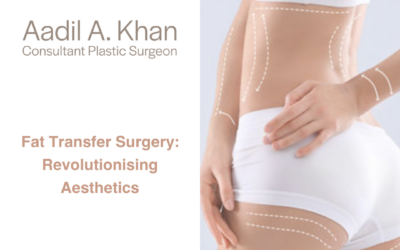In the journey of self-improvement and aesthetic enhancement, breast surgeries have become more than a trend— they reflect a deeply personal choice in the narrative of personal transformation. Among the myriad options available, breast uplift, formally known as mastopexy, has gained significant popularity, promising not just physical change, but a holistic boost in confidence and well-being.
Understanding when and why women choose this procedure, and what happens during the process, is critical for individuals considering it. Let’s dive deeper into the world of breast uplift, examining its transformative powers and shedding light on what the experience entails.
What Is a Breast Uplift, and Who Is It For?
Breast uplift, or mastopexy, is a surgical procedure designed to raise and reshape sagging breasts. This surgery can also reduce the size of the areola (the darker skin surrounding the nipple), and it can be done in conjunction with breast augmentation for those looking to restore fullness, volume, and a more youthful contour to their breasts.
While there’s no singular “right” reason to opt for a breast uplift, most individuals who pursue this procedure fall into a few key categories:
Postpartum Patients: The significant change in breast size and volume, along with breastfeeding, often leads to sagging or deflated breasts. For many women, a breast uplift offers a way to regain a pre-pregnancy bustline and confidence.
Weight Loss Warriors: Substantial weight loss can be a double-edged sword, leading to a new physique but often leaving behind excess skin and a sagging chest. A breast uplift can be a critical part of the journey, completing the transformation.
The Aging or Genetically Predisposed: Genetics and age-related changes can cause breasts to lose their firmness and shape. For individuals unhappy with these natural changes, a breast uplift can be a way to wind back the clock and maintain a more youthful appearance.
The decision to undergo a breast uplift is deeply personal. It’s important for anyone considering this procedure to have realistic expectations and to consult with a board-certified plastic surgeon to determine if they are a good candidate.
Understanding the Types of Breast Uplift Procedures
There is no one-size-fits-all approach to a breast uplift, and the type of surgery that will best serve an individual’s needs depends on several factors, including breast size and shape, the degree of ptosis (sagging), and the patient’s desired outcome. Let’s explore the common types of breast uplift procedures:
Crescent Mastopexy: This is the least invasive type of mastopexy, usually reserved for patients with minimal sagging. The incisions are made around the upper half of the areola, allowing for small adjustments in height and position.
Peri-Areolar Uplift (Donut Lift): For those with slightly more sagging, the peri-areolar uplift involves incisions around the areola’s entire circumference. This allows for more significant reshaping and creates a custom-fit donut shape above the areola to lift and reshape the breast tissue.
Vertical Mastopexy (Lollipop Lift): Suitable for moderate ptosis, this procedure adds a vertical incision from the bottom edge of the areola down to the crease beneath the breast. This is often a preferred choice for mothers who have experienced significant changes from breastfeeding.
Inverted-T Mastopexy (Anchor Lift): The most comprehensive of the mastopexy procedures, the inverted-T lift includes an additional incision along the natural crease of the breast. This technique is ideal for those with severe ptosis, providing maximal reshaping and lifting results.
Patients and surgeons work together to select the right technique, taking into account the desired outcome, existing breast characteristics, and the patient’s comfort level with the extent of incisions.
Preparing for Your Breast Uplift Journey
Deciding to undergo surgery is just the first step in the breast uplift journey. The pre-operative phase is critical to ensuring a smooth and successful procedure. Here are key steps in preparing for your mastopexy:
Consultation and Planning: Your first visit to a plastic surgeon will involve a thorough discussion of your medical history, a physical examination, and a frank conversation about your goals and expectations. It’s also the time to discuss which technique is best for you and what the risks and benefits are.
Lifestyle Adjustments: Your surgeon will likely recommend some lifestyle changes before the surgery, such as quitting smoking, adjusting existing medications, and optimizing your physical health.
Mental Preparation: Preparing emotionally is as important as being physically fit for surgery. Learning about the procedure and managing expectations can help ease anxiety and build the confidence needed for a positive experience.
Logistics and Support: You’ll need to plan for the post-operative phase, including arranging for someone to drive you home from the hospital and having a support system in place for your recovery.
Taking these steps seriously can have a significant impact on the outcomes of the surgery and the recovery process.
The Day of Your Breast Uplift Surgery
The day of your breast uplift is a culmination of weeks of preparation. Here’s what to expect:
Hospital Arrival and Prep: You’ll be admitted to the hospital on the day of your surgery. The surgical team will go over the procedure once more and ensure you are as comfortable as possible before taking you into the operating room.
Anesthesia: You will undergo general anesthesia for this procedure, which means you’ll be asleep and not feel any discomfort during the surgery.
The Procedure: The surgeon will carefully follow the predetermined incision patterns to lift and reshape your breast tissue. If necessary, the areolas will be resized and the nipples repositioned to fit your new breast shape. The surgery typically takes two to three hours, depending on the complexity of the case.
Recovery Room: After the surgery is complete, you’ll be moved to a recovery room where you can wake up in a controlled environment. This is the first step in your recovery process.
Your surgeon will provide detailed instructions on what to expect immediately after the surgery and throughout the recovery period.
Post-Surgery Recovery and Beyond
The recovery period for a breast uplift is as crucial as the procedure itself. Here are the stages of recovery and what you can expect:
Immediate Postoperative Care: You will be monitored closely for the first few hours post-surgery to ensure there are no complications. Once you are stable, you’ll be discharged with specific instructions for at-home care.
Managing Discomfort and Swelling: You will experience some level of discomfort and swelling, which can be managed with prescribed pain medication and proper rest. Wearing a support bra is often recommended to minimize swelling and provide comfort.
Physical Activity: It is essential to avoid strenuous activity, heavy lifting, and high-impact exercises during the initial recovery period. Your surgeon will provide guidance on when it’s safe to resume normal activities.
Scarring and Wound Care: Incisions will leave scars, but they will fade over time. Keep the incisions clean and dry as per your surgeon’s instructions to promote healing. Be sure to keep up with follow-up appointments to monitor your recovery progress and address any concerns.
Enjoying the Results: The full results of a breast uplift may take several months to become apparent as swelling subsides and the breast tissue settles into its new position. You should notice a significant improvement soon after surgery, but the final outcome will be evident once the healing process is complete.
The Benefits and Risks of a Breast Uplift
Like any surgical procedure, a breast uplift offers various benefits alongside some potential risks.
Benefits of a Breast Uplift: The primary benefit is achieving a more youthful, uplifted breast shape and position. Many patients also experience improved self-confidence and find it easier to wear certain types of clothing.
Risks to Consider: Every surgery carries risks, including infection, bleeding, scarring, and changes in nipple and breast sensation. These are discussed in detail during the consultation to ensure a fully informed decision.
It’s essential to discuss the full spectrum of benefits and potential risks with your surgeon to decide if a breast uplift is the right choice for you.
Final Thoughts: Is a Breast Uplift Worth it?
So, is a breast uplift worth it? For those who feel self-conscious about sagging breasts and are looking to enhance their silhouette and self-esteem, the answer may be a resounding “yes.”
Most patients are thrilled with the results of their breast uplift, and the psychological benefits can be as transformative as the physical ones. However, it’s important to remember that this is a significant decision that requires careful consideration and a full understanding of what the process entails.
Before embarking on this journey, thorough research, realistic expectations, and a trusted partnership with a qualified plastic surgeon are vital steps toward a successful breast uplift experience.




